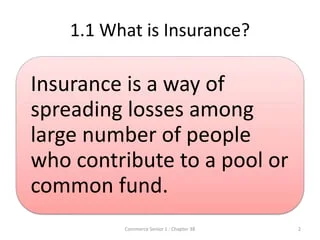Pacific Prime - The Facts
Pacific Prime - The Facts
Blog Article
Pacific Prime - An Overview
Table of ContentsWhat Does Pacific Prime Do?Pacific Prime - An OverviewThe Ultimate Guide To Pacific PrimeAll about Pacific PrimeNot known Details About Pacific Prime

This is due to the fact that the information were collected for a duration of solid economic performance. Of the approximated 42 million individuals who were without insurance, all yet about 420,000 (concerning 1 percent) were under 65 years old, the age at which most Americans become qualified for Medicare; 32 million were grownups in between ages 18 and 65, around 19 percent of all adults in this age; and 10 million were youngsters under 18 years of age, regarding 13.9 percent of all youngsters (Mills, 2000).
These price quotes of the variety of persons without insurance are created from the yearly March Supplement to the Existing Population Survey (CPS), carried out by the Demographics Bureau. Unless or else kept in mind, national estimates of people without medical insurance and proportions of the population with different kinds of coverage are based on the CPS, the most commonly utilized source of price quotes of insurance coverage and uninsurance rates.
Some Ideas on Pacific Prime You Need To Know

Still, the CPS is especially helpful because it produces yearly estimates relatively quickly, reporting the previous year's insurance policy protection estimates each September, and due to the fact that it is the basis for a regular collection of quotes for more than 20 years, permitting for evaluation of trends in coverage gradually. For these factors, in addition to the substantial use the CPS in other researches of insurance policy coverage that are offered in this report, we rely upon CPS price quotes, with restrictions noted.

The estimate of the number of without insurance people increases when a populace's insurance policy condition is tracked for several years. Over a three-year duration starting early in 1993, 72 million people, 29 percent of the U.S. http://tupalo.com/en/users/6478264. populace, were without coverage for at the very least one month. Within a solitary year (1994 ), 53 million individuals experienced a minimum of a month without insurance coverage (Bennefield, recommended you read 1998a)
6 out of every ten uninsured grownups are themselves employed. Although functioning does enhance the possibility that one and one's household members will certainly have insurance, it is not a guarantee. Also members of households with two permanent breadwinner have virtually a one-in-ten chance of being uninsured (9.1 percent without insurance rate) (Hoffman and Pohl, 2000).
The 7-Minute Rule for Pacific Prime
New immigrants account for a considerable percentage of individuals without health insurance policy. One analysis has associated a substantial part of the current growth in the size of the U.S. uninsured population to immigrants that got here in the nation in between 1994 and 1998 (Camarota and Edwards, 2000). Current immigrants (those that pertained to the United States within the previous 4 years) do have a high rate of being without insurance (46 percent), yet they and their children represent simply 6 percent of those without insurance country wide (Holahan et al., 2001).
The connection in between medical insurance and access to care is well established, as documented later in this chapter. Although the connection in between medical insurance and health outcomes is neither direct neither straightforward, a comprehensive scientific and health and wellness solutions research literary works web links medical insurance coverage to enhanced access to care, better quality, and boosted individual and populace health and wellness condition.
Levels of evaluation for taking a look at the effects of uninsurance. It concentrates specifically on those without any kind of health and wellness insurance for any type of size of time.
The Of Pacific Prime
The issues dealt with by the underinsured are in some aspects similar to those encountered by the without insurance, although they are typically much less serious. Health and wellness insurance, nonetheless, is neither needed nor sufficient to gain accessibility to medical solutions. The independent and straight effect of wellness insurance policy coverage on accessibility to health solutions is well established.
Others will certainly acquire the healthcare they need also without wellness insurance coverage, by paying for it expense or seeking it from companies that use care cost-free or at highly subsidized prices. For still others, health insurance alone does not make certain receipt of care as a result of other nonfinancial obstacles, such as a lack of wellness care carriers in their community, limited accessibility to transport, illiteracy, or linguistic and social distinctions.
Not known Facts About Pacific Prime
Formal research study concerning uninsured populaces in the United States dates to the late 1920s and very early 1930s when the Committee on the Cost of Treatment produced a series of records concerning funding medical professional office gos to and hospital stays. This problem came to be significant as the varieties of clinically indigent climbed up throughout the Great Clinical depression.
Report this page